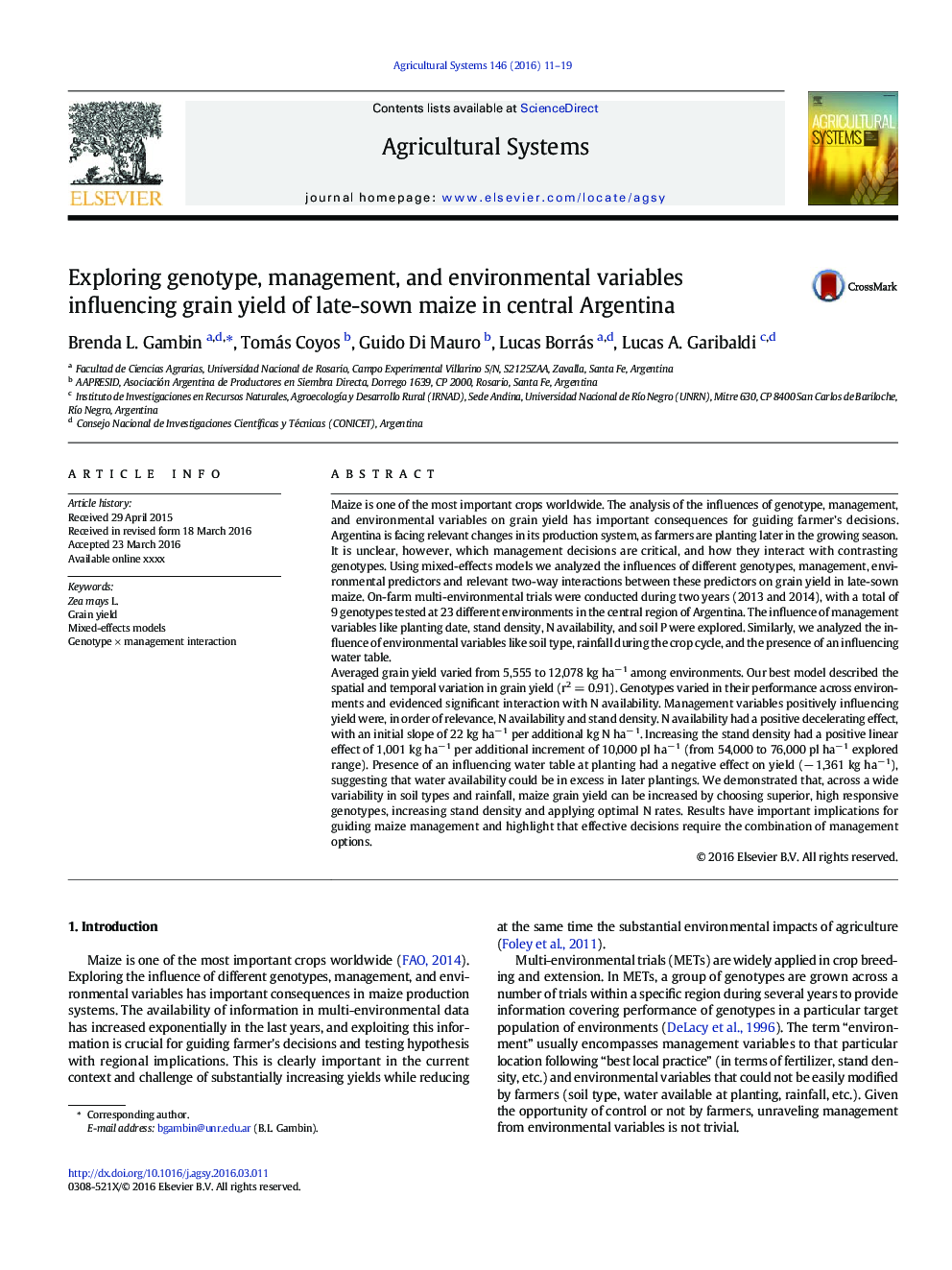| Article ID | Journal | Published Year | Pages | File Type |
|---|---|---|---|---|
| 6368373 | Agricultural Systems | 2016 | 9 Pages |
Abstract
Averaged grain yield varied from 5,555 to 12,078 kg haâ 1 among environments. Our best model described the spatial and temporal variation in grain yield (r2 = 0.91). Genotypes varied in their performance across environments and evidenced significant interaction with N availability. Management variables positively influencing yield were, in order of relevance, N availability and stand density. N availability had a positive decelerating effect, with an initial slope of 22 kg haâ 1 per additional kg N haâ 1. Increasing the stand density had a positive linear effect of 1,001 kg haâ 1 per additional increment of 10,000 pl haâ 1 (from 54,000 to 76,000 pl haâ 1 explored range). Presence of an influencing water table at planting had a negative effect on yield (â 1,361 kg haâ 1), suggesting that water availability could be in excess in later plantings. We demonstrated that, across a wide variability in soil types and rainfall, maize grain yield can be increased by choosing superior, high responsive genotypes, increasing stand density and applying optimal N rates. Results have important implications for guiding maize management and highlight that effective decisions require the combination of management options.
Related Topics
Life Sciences
Agricultural and Biological Sciences
Agricultural and Biological Sciences (General)
Authors
Brenda L. Gambin, Tomás Coyos, Guido Di Mauro, Lucas Borrás, Lucas A. Garibaldi,
